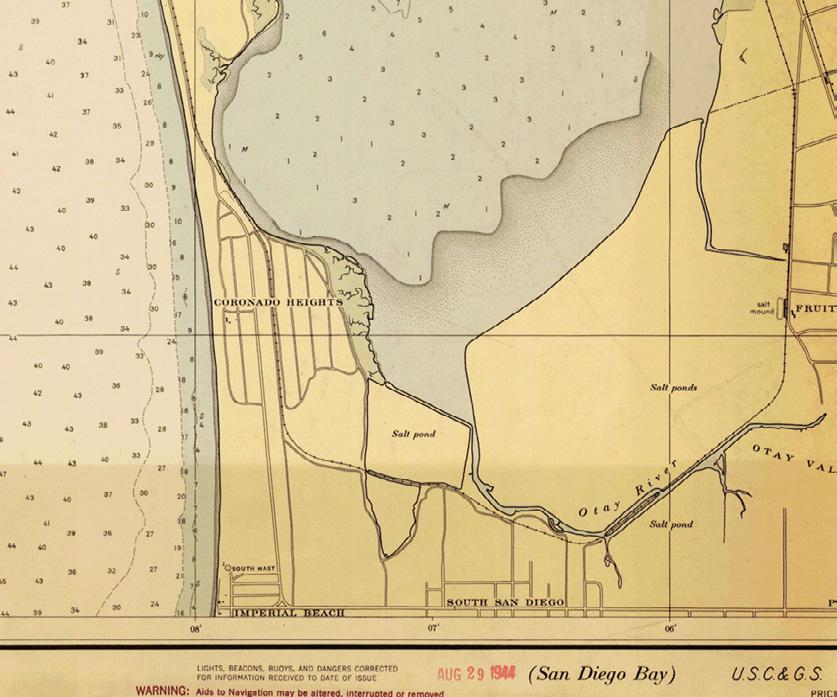
3 minute read
The Land - YMCA Camp Surf
The history of YMCA Camp Surf’s 45 acres is reflective of the history of coastal Southern California. It has changed hands many times, ultimately becoming federal land due to its strategic placement and the influence of wartime security. Several branches of the military have operated on it since that time.
SPANISH LAND GRANT
Advertisement
Rancho Isla Peninsula de San Diego (Coronado, North Island, and the Silver Strand) was deeded to Pedro and Josefa Carrillo as a wedding gift in 1846. The land was quickly sold for $1,000 in silver. California became a state in 1850 and the land remained a cattle ranch into the late 1800s.
THE SPECULATIVE BOOM IN SOUTHERN CALIFORNIA
Elisha Babcock and Hampton Story purchased the same land for $110,000 in 1885 to develop the City of Coronado, including the Hotel Del Coronado. They laid out what was called Coronado Heights at the south end of the Silver Strand. In 1887, they constructed tree-line streets, and hoped Coronado Heights would be as successful as their property development had been on the Island in Coronado. Unfortunately for Babcock and his associates, the land boom turned into a bust in 1888. Coronado Heights remained a vacant tract of tree-lined boulevards until it was purchased by John D. Spreckels, who unsuccessfully tried to sell the land to the State of California for use as a state a park.



STRATEGIC MILITARY USE From 1920 to 1945, the property was a mixture of US Army and Navy facilities. The Navy leased part of the land from the owner at the time for a Radio Compass Base from 1920-1938 to aid in ship navigation. In the late 1930s, the Navy condemned the property, and took ownership, paying $55,000 for the land. In 1941, the Navy added Radio Directional Finding capabilities at the southern end of the base which is now the location of YMCA Camp Surf. In October 1942, the Army acquired ownership of the 412 acres at Coronado Heights through a “Declaration of Taking Action” for the purpose of erecting coastal defense batteries. The name of the property was changed to Fort Emory.
Army land at Fort Emory was transferred back to the Navy in 1944 (119 acres) and 1950 (412 acres) as the need for coastal defense declined. The Navy designated the site as Fort Emory Amphibious Training Base and incorporated it as part of the Amphibious Training Station at Coronado. Construction started in 1944 and included 240 Quonset huts for enlisted housing, officer berthing, mess halls, a gate house, administrative headquarters, and utility buildings.
A COLD WAR MISSION
A Wullenweber circular antenna was constructed on the site from 1963-1965 and the site was renamed the Naval Radio Receiving Facility (NRRF). The antenna was used to triangulate radio signals, vital during the Cold War. Known by locals as the “elephant cage,” it was removed in 2014 except for one small section to document its place in history.

NAVAL SPECIAL WARFARE FACILITIES
The current name for the Navy property is the Silver Strand Training Complex (SSTC). In 2015 construction began on the Coastal Campus, a premier training facility for U.S. Special Operations Forces. When complete, Naval Special Warfare Group One, its four SEAL teams, logistic support unit, supporting operational organization and specialized training facilities will relocate from Coronado to the new Coastal Campus on SSTC-south. The YMCA Camp Surf lease is for 45 acres on the Southwestern corner of the SSTC, and serves as a buffer between the community of Imperial Beach and the new Naval Special Warfare Coastal Campus.











